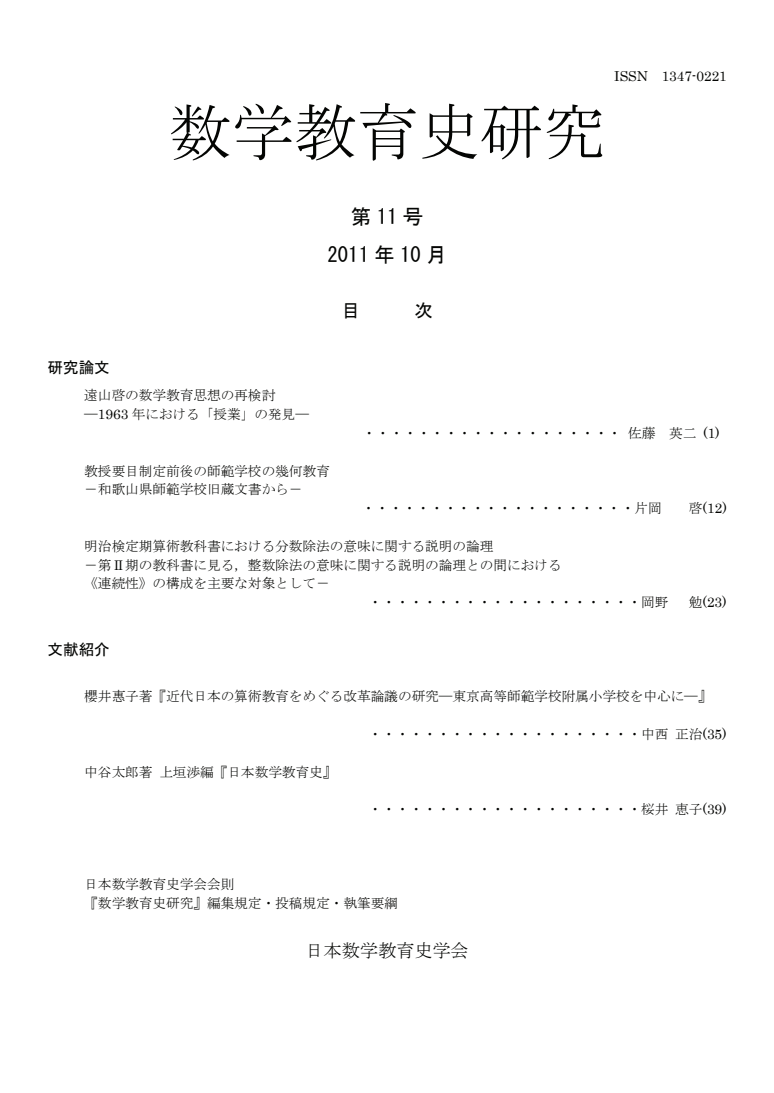11 巻
選択された号の論文の11件中1~11を表示しています
- |<
- <
- 1
- >
- >|
-
2011 年 11 巻 p. 0
発行日: 2011年
公開日: 2023/11/13
PDF形式でダウンロード (232K) -
2011 年 11 巻 p. i-iv
発行日: 2011年
公開日: 2022/03/10
PDF形式でダウンロード (548K)
研究論文
-
2011 年 11 巻 p. 1-11
発行日: 2011年
公開日: 2022/03/10
PDF形式でダウンロード (516K) -
2011 年 11 巻 p. 12-22
発行日: 2011年
公開日: 2022/03/10
PDF形式でダウンロード (1024K) -
2011 年 11 巻 p. 23-34
発行日: 2011年
公開日: 2022/03/10
PDF形式でダウンロード (871K)
-
2011 年 11 巻 p. 35-38
発行日: 2011年
公開日: 2022/03/10
PDF形式でダウンロード (471K) -
2011 年 11 巻 p. 39-40
発行日: 2011年
公開日: 2022/03/10
PDF形式でダウンロード (397K) -
2011 年 11 巻 p. 41
発行日: 2011年
公開日: 2023/11/13
PDF形式でダウンロード (373K) -
2011 年 11 巻 p. 42-43
発行日: 2011年
公開日: 2023/11/13
PDF形式でダウンロード (457K) -
2011 年 11 巻 p. 44
発行日: 2011年
公開日: 2023/11/13
PDF形式でダウンロード (391K) -
2011 年 11 巻 p. 45
発行日: 2011年
公開日: 2023/11/13
PDF形式でダウンロード (149K)
- |<
- <
- 1
- >
- >|
